On this page
Weather, climate and climate changeThe page lists books that consider the effects of weather, climate and climate change on birds. The books are listed in chronological order with the most recent at the top. Books about migration are listed on a separate page.
|
|
|
|
The Messengers: What Birds Tell Us about Threats from Climate Change and Solutions for Nature and PeopleEditor: Stuart Butchart, Ali North, Edward Perry, Pepe Clarke, Tris Allinson, Gary Langham
Birdlife International
2015
"This global synthesis, an assessment of hundreds of peer-reviewed studies, shows global warming already threatens ecosystems, and risks will amplify as warming continues. Despite the dire current and future danger posed by climate change, the synthesis offers hope. Its collection of nature-based solutions, including those led by BirdLife International Partners around the world, are examples of the kind of ecosystems-based adaptation and mitigation necessary to curtail this threat—for the protection of birds and humans."
|
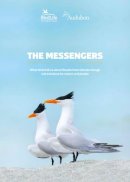 |
|
Global Warming and Population Responses among Great Plains BirdsPaul A. Johnsgard
Zea Books
2015
"Based on an analysis of 47 years (1967–2014) of Audubon Christmas Bird Counts (CBC), evidence for population changes and shifts in early winter (late December) ranges of nearly 150 species of birds in the Great Plains states is summarized, a region defined as including the Dakotas, Nebraska, Kansas, Oklahoma, and the Texas panhandle. …… Over this 47-year period there has been a progressive winter warming trend regionally, and associated ecological changes, influencing the early winter regional abundance and geographic distributions of many birds. The great majority these changes have involved northward shifts in early winter distributions. Over this approximate half-century interval at least six species (Canada goose, mallard, black-capped chickadee, American goldfinch, and house finch) have shifted their areas of greatest early winter abundance two states northward, and the centers of maximum abundance of at least ten other species have shifted northward by at least one state. Milder and less stressful early winter temperatures, with associated extended periods of ice-free water and greater access to snow free foraging sites, are believed to be responsible."
|
Buy from amazon.co.uk 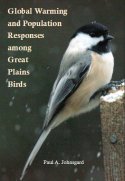
|
|
Birds and Climate Change: Impacts and Conservation ResponsesJames Pearce-Higgins and Rhys E Green
Ecology, Biodiversity and Conservation Series
Cambridge University Press
2014
"From the red grouse to the Ethiopian bush-crow, bird populations around the world can provide us with vital insights into the effects of climate change on species and ecosystems. They are among the best studied and monitored of organisms, yet many are already under threat of extinction as a result of habitat loss, overexploitation and pollution. Providing a single source of information for students, scientists, practitioners and policy-makers, this book begins with a critical review of the existing impacts of climate change on birds, including changes in the timing of migration and breeding and effects on bird populations around the world. The second part considers how conservationists can assess potential future impacts, quantifying how extinction risk is linked to the magnitude of global change and synthesising the evidence in support of likely conservation responses. The final chapters assess the threats posed by efforts to reduce the magnitude of climate change."
|
Buy from amazon.co.uk 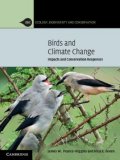
|
|
Climate Change Adaptation Plan for Australian BirdsEditor: Stephen T. Garnett, Donald C. Franklin
CSIRO
2014
"This is the first climate change adaptation plan produced for a national faunal group anywhere in the world. It outlines the nature of threats related to climate change for the Australian bird taxa most likely to be affected by climate change, and provides recommendations on what might be done to assist them and an approximate cost of doing so. It also features an analysis of how climate change will affect all Australian birds, explains why some species are likely to be more exposed or sensitive to it than others, and explores the theory and practice of conservation management under the realities of a changing climate."
|
Buy from amazon.co.uk 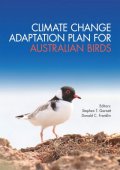
|
|
Behavioural Responses to a Changing World: Mechanisms and ConsequencesEditor: Ulrika Candolin, Bob B.M. Wong
Oxford University Press
2012
"Human-induced environmental change currently represents the single greatest threat to global biodiversity. Species are typically adapted to the local environmental conditions in which they have evolved. Changes in environmental conditions initially influence behaviour, which in turn affects species interactions, population dynamics, evolutionary processes and, ultimately, biodiversity. How animals respond to changed conditions, and how this influences population viability, is an area of growing research interest. Yet, despite the vital links between environmental change, behaviour, and population dynamics, surprisingly little has been done to bridge these areas of research. Behavioural Responses to a Changing World is the first book of its kind devoted to understanding behavioural responses to environmental change. The volume is comprehensive in scope, discussing impacts on both the mechanisms underlying behavioural processes, as well as the longer-term ecological and evolutionary consequences. Drawing on international experts from across the globe, the book covers topics as diverse as endocrine disruption, learning, reproduction, migration, species interactions, and evolutionary rescue."
|
Buy from amazon.co.uk 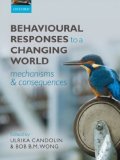
|
|
Winged Sentinels: Birds and Climate ChangeJanice Wormworth and Cagan H. Sekercioglu
Cambridge University Press
2011
"'The ability of the birds to show us the consequences of our own actions is among their most important and least appreciated attributes. Despite the free advice of the birds, we do not pay attention', said Marjory Stoneman Douglas in 1947. From ice-dependent penguins of Antarctica to songbirds that migrate across the Sahara, birds' responses provide early warning signs of the impact of climate change. Winged Sentinels: Birds and Climate Change uses colourful examples to show how particular groups of birds face heightened threats from climate change and to explore how we can help birds adapt in a warming world. Generously illustrated with colour photographs, the book is a fascinating insight into what climate change means for birds, and the potential consequences of ignoring these warning signs."
|
Buy from amazon.co.uk 
|
|
Avian Survivors: The Biogeography of Palearctic BirdsClive Finlayson
Poyser
2011
"Using a fresh approach that classifies birds according to their bioclimatic characteristics, Clive Finlayson views the history and distribution of Palearctic birds from a radical new angle. History and chance events play a central role in a story that has its origins before the asteroid impact that finished off the dinosaurs. In this book, Finlayson shows that the avifauna of the Palearctic long predates the glaciations of the last two million years, and had established itself gradually during the turbulent times of the Miocene and Pliocene, the lifting of Tibet and the drying of the continents having a major influence on these birds. Those that made it to the start of the glaciations were equipped to deal with whatever the climate could throw at them. They were the avian survivors, and they are still here with us today. Packed with figures and with a rich colour section, Avian Survivors tells the definitive story of the birds of the Palearctic, across space and time."
|
Buy from amazon.co.uk 
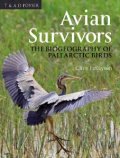
|
|
Driven to Extinction: The Impact of Climate Change on BiodiversityRichard Pearson
Natural History Museum
2011
"Drawing upon a wide range of illuminating case studies from around the world, Driven to Extinction provides a balanced and highly readable insight into the potential impacts of climate change on the diversity of life. Richard Pearson meticulously assembles the evidence of how species of plants and animals have reacted to temperature changes in the past, and how they are likely to respond in the future. He shows how different species are interconnected, how subtle yet essential those connections can be, and how severing one link in the complex chain of mutual cooperation and dependency can lead to the breakdown of a once-thriving community and, ultimately, extinction. At the same time, he also explores how climate change can offer some species new opportunities even as it narrows prospects for others, highlighting the adaptability and survival techniques of some of the weirdest and most wonderful creatures on the planet. Exposing successes and flaws in current research, Driven to Extinction is an engaging and unbiased overview of what scientists know - and don't know - about the impacts of climate change."
|
Buy from amazon.co.uk 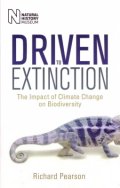
|
|
Effects Of Climate Change On BirdsEditor: Anders Pape Møller, Wolfgang Fiedler and Peter Berthold
Oxford University Press
2010
"Climate change affects all living organisms; it has done so in the past and will do so in the future. However, current climate change is exceptional both in terms of the rate of change and the impact of multiple types of global change on individuals, populations, species, and ecosystems. Effects of Climate Change on Birds provides an exhaustive and up-to-date synthesis of the science of climate change as it relates to birds. Compared with any other class of animals, birds provide more long-term data and extensive time series (some dating back more than 100 years), a more geographically and taxonomically diverse source of information, and a longer tradition of extensive research. In fact this research record exceeds what is available in all other organisms combined."
|
Buy from amazon.co.uk 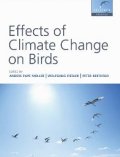
|
|
Bird Migration and Global ChangeGeorge W. Cox
IslandPress
2010
"Changes in seasonal movements and population dynamics of migratory birds in response to ongoing changes resulting from global climate changes are a topic of great interest to conservation scientists and birdwatchers around the world. Because of their dependence on specific habitats and resources in different geographic regions at different phases of their annual cycle, migratory species are especially vulnerable to the impacts of climate change. In 'Bird Migration and Global Change', eminent ecologist George Cox brings his extensive experience as a scientist and bird enthusiast to bear in evaluating the capacity of migratory birds to adapt to the challenges of a changing climate. Cox reviews, synthesizes, and interprets recent and emerging science on the subject, beginning with a discussion of climate change and its effect on habitat, and followed by eleven chapters that examine responses of bird types across all regions of the globe. The final four chapters address the evolutionary capacity of birds, and considers how best to shape conservation strategies to protect migratory species in coming decades. The rate of climate change is faster now than at any other moment in recent geological history. How best to manage migratory birds to deal with this challenge is a major conservation issue, and 'Bird Migration and Global Change' is a unique and timely contribution to the literature."
|
Buy from amazon.co.uk 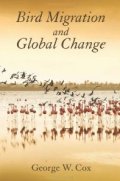
|
|
Climate Change Biology
Lee Hannah
Academic Press
2010
"Climate Change Biology is a new textbook which examines this emerging discipline of human-induced climate change and the resulting shifts in the distributions of species and the timing of biological events. The text focuses on understanding the impacts of human-induced climate change, but draws on multiple lines of evidence, including paleoecology, modelling and current observation. Climate Change Biology lays out the scope and depth of understanding of this new discipline in terms that are accessible to students, managers and professional biologists. It is the only advanced student text on the biological aspects of climate change. It examines recent and deep past climate change effects to better understand the impacts of recent human-induced changes. It discusses the conservation and other ecological implications of climate change in detail. It presents recipes for coping with accelerating climate change in the future."
|
Buy from amazon.co.uk 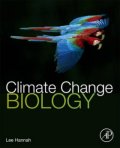
|
|
Boom and Bust: Bird Stories for a Dry CountryLibby Robin, Rob Heinshohn and Leo Joseph
CSIRO Publishing
2009
"In Boom and Bust, the authors draw on the natural history of Australia's charismatic birds to explore the relations between fauna, people and environment. They consider changing ideas about deserts and how these have helped to understand birds and their behaviour in this driest of continents. The book describes the responses of animals and plants to environmental variability and stress. It is also a cultural concept, capturing the patterns of change wrought by humans in Australia, where landscapes began to become cultural about 55,000 years ago as ecosystems responded to Aboriginal management. In 1788, the British settlement brought, almost simultaneously, both agricultural and industrial revolutions to a land previously managed by fire for hunting. How have birds responded to this second dramatic invasion?"Boom and Bust" is also a tool for understanding global change."
|
Buy from amazon.co.uk 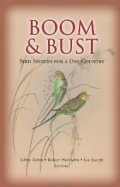
|
|
The Effects Of Climate Change On Migratory Waterbirds Within The African-Eurasian FlywayI.M.D. Maclean, M.M. Rehfisch, S. Delaney, R.A. Robinson
BTO
2009
"Waterbirds are likely to be amongst the organisms most adversely affected by climate change as they are associated with a habitat that is very vulnerable to changes in rainfall, evaporation and human demand and because they could be affected in any of the areas between which they migrate."
|
Buy from amazon.co.uk 
|
|
Four Decades of Christmas Bird Counts in the Great Plains: Ornithological Evidence of a Changing ClimatePaul A. JohnsgardWinter range maps: Thomas G. Shane
University of Nebraska–Lincoln Libraries
2009
Opening lines of foreword: "The rationale for this book has its origins in Terry Root’s 1988 Atlas of North American Wintering Birds, which provided a baseline landmark for evaluating the nationwide winter distributions of North American birds, using data from the National Audubon Society’s annual Christmas Bird Counts birds from 1962-63 through 1971-72. Tom Shane and I speculated that an updated analysis might shed light on the possible effects of more recent climatic warming trends on bird migration and wintering patterns in the Great Plains, a region known for its severe winters and also one of our continent’s important migratory pathways and wintering regions. As life-long residents of the Great Plains, we have both lived long enough to have witnessed some of these changes in avian migrations and wintering patterns personally."
|
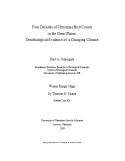 |
|
Indicators of the impact of climate change on migratory speciesNewson, S.E., Dulvy, N., Hays, G.C., Houghton, J.D.R., Gerard, F.F., Hutson, A.M., Macleod, C.D., Mendes, S., Robinson, R., Sparks, T.H., Pierce, G.J & Crick, H.Q.P
BTO Research Report 495
British Trust for Ornithology
2008
Opening lines: "Migratory species, by travelling large distances, often between discrete sites, are particularly likely to be affected by anthropogenically-induced climate change at some point in their life cycles. The UK Government is a signatory to a number of international treaties and agreements that seek to promote and maintain the conservation status of migratory species of wildlife, and the Department for Environment, Food and Rural Affairs (Defra) takes a lead role for the Government in th ese areas. The primary instrument in this area is the Bonn Convention on the Conservation of Migratory Species of Wild Animals (CMS). Recently, the CMS adopted a Resolution (UNEP/CMS/8.13) recognising the impacts of climate change on migratory species and calling on parties and range states to undertake more research to improve our understanding of these impacts and to implement adaptation measures to help reduce foreseeable adverse effects addressing this."
|
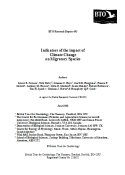 |
|
A Climatic Atlas of European Breeding BirdsBrian Huntley, Rhys E. Green, Yvonne C. Collingham and Sophia G. Willis
Lynx Edicions / RSPB / University of Durham
2007
"An exploration of the relationships between the distributions of birds breeding in Europe and the climate, and how future climatic change may alter each species' potential breeding distribution. It presents the results for 431 species. It also includes brief accounts for a further 48 native and 16 introduced species."
|
Buy from amazon.co.uk 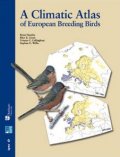
|
|
Effects of Climate Variation on the Breeding Ecology of Arctic ShorebirdsHans Meltofte
Museum Tusculanum Press
2007
"About 50 species of shorebirds breed in the Arctic, where they constitute the most characteristic component of the tundra avifauna. Here, we review the impact of weather and climate on the breeding cycle of shorebirds based on extensive studies conducted across the Arctic. Conditions for breeding shorebirds are highly variable among species, sites and regions, both within and between continents. Weather effects on breeding are most moderate in the Low Arctic of northern Europe and most extreme in the Siberian High Arctic. The decision of whether or not to breed upon arrival on the breeding grounds, the timing of egg-laying and the chick-growth period are most affected by annual variation in weather. In large parts of the Arctic, clutch initiation dates are highly correlated with snowmelt dates and in regions and years where extensive snowmelt occurs before or soon after the arrival of shorebirds, the decision to breed and on the breeding ecology of clutch initiation dates appear to be a function of food availability for laying females. Once incubation is initiated, adult shorebirds appear fairly resilient to variations in temperature with nest abandonment primarily occurring in case of severe weather with new snow covering the ground. Feeding conditions for chicks, a factor highly influenced by weather, affects juvenile production in most regions. Predation has a very strong impact on breeding productivity throughout the Arctic and subarctic, with lemming Dicrostonyx spp. and Lemmus spp. fluctuations strongly influencing predation rates, particularly in the Siberian Arctic. The fate of Arctic shorebirds under projected future climate scenarios is uncertain, but High Arctic species and populations appear particularly at risk. Climatic amelioration may benefit Arctic shorebirds in the short term by increasing both survival and productivity, whereas in the long term habitat changes both on the breeding grounds and on the temperate and tropical non-breeding areas may put them under considerable pressure and may bring some of them near to extinction. Their relatively low genetic diversity, which is thought to be a consequence of survival through past climatically-driven population bottlenecks, may also put them more at risk to anthropogenic-induced climate variation than other avian taxa."
|
Buy from amazon.co.uk 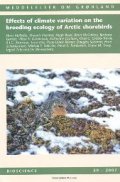
|
|
Migratory Waterbirds And Climate Change: Effects Within The African-Eurasian FlywaysIlya M.D. Maclean, Mark M. Rehfisch, Robert A. Robinson, Simon Delany
AEWA
2005
Opening lines: "It is now unequivocal that our climate is warming. Increases in global temperatures, widespread melting of snow and ice and rising sea levels all point directly to a warmer planet. There is overwhelming evidence that humans are contributing to global warming. Most of the observed increase in temperatures since the mid-20th century is very likely to be due to the observed increase in greenhouse gas concentrations. Climate change is likely to affect all ecosystems, but wetlands are particularly vulnerable. Not only are they the world's most threatened ecosystem but their sensitivity to changes in water level make them especially susceptible to changes in precipitation or evapotranspiration."
|
 |
|
Birds and Climate ChangeEditor: Anders Pape Moller, Wolfgang Fiedler, Luo Yiqi
Academic Press
2004
"Temperature and other climate variables are currently changing at a dramatic rate. Birds are excellent model organisms, with a very active metabolism, they are highly sensitive to environmental changes and as highly mobile creatures they are also extremely reactive. This book discusses our current knowledge of observed changes and provides guidelines for studies in the years to come so we can document and understand how patterns of changing weather conditions may affect birds. The various chapters are written by leading experts in these fields and enlighten a broad range of aspects in bird ecology."
|
Buy from amazon.co.uk 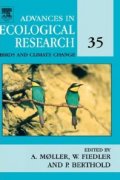

|
|
Weather and Bird BehaviourNorman Elkins
Illustrations: Crispin Fisher, Alan Harris
Poyser
3rd edition
2003
"This book discusses the various ways in which weather conditions influence bird behaviour. Weather conditions affect food and water availability, decisions about when and how to migrate, timing and success of reproduction, flight style and physical comfort. Birds display many adaptations in form and behaviour that help them to cope with changing weather conditions and this book uses a great variety of examples to explore the subject in depth."
|
Buy from amazon.co.uk 
|
|
The Adelie Penguin: Bellwether of Climate ChangeDavid G. Ainley
Columbia University Press
2002
"The Adelie penguin is one of the best-studied birds in the world and is the subject of research programs from a dozen nations interested in monitoring changes in the environment and the food webs of the Southern Ocean. This species' population has been changing dramatically over the past few decades coincident with a general warming of the maritime portion of Antarctica. When the sea-ice is seen to decline so does the population of Adelie penguins. Further south, however, the population is increasing. This book summarizes our present ecological knowledge of this polar seabird. In so doing, David Ainley describes the ecological factors important to its life history and details the mechanisms by which it is responding to climate change. The author also chronicles the history of research on Adelie penguins, beginning with the heroic expeditions at the beginning of the twentieth century. Weaving together history, ecology, natural history, and written accounts from the earliest Antarctic naturalists into a fascinating account of this charismatic bird, The Adelie Penguin provides a foundation upon which future ornithological research and environmental monitoring can be based. It is a model for investigations into the effect of climate change on a particular species. The book also contains many fine illustrations from the accomplished illustrator Lucia de Leiris and photographs by the author."
|
Buy from amazon.co.uk 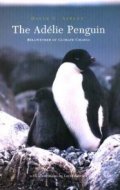
|
|
Wildlife Responses to Climate ChangeEditor: Stephen H. Schneider and Terry L. Root
Island Press
2001
"This text is the culmination of a three-year project to research and study the impacts of global climate change on ecosystems and individual wildlife species in North America. In 1997, the National Wildlife Federation provided fellowships to eight graduate students to conduct research on global climate change, this book presents the results. It features case studies which examine: ways in which local and regional climate variables affect butterfly populations and habitat ranges; how variations in ocean temperature have affected intertidal marine species; the potential effect of reduced snow cover on plants in the Rocky Mountains; the potential effects of climate change on the distribution of vegetation in the United States; how climate change may increase the susceptibility of ecosystems to invasions of non-species; and the potential for environmental change to alter interactions between a variety of organisms in whitebark pine communities of the Greater Yellowstone ecosystem."
|
Buy from amazon.co.uk 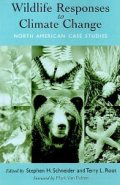
|
|
Birds and Weather: A Birdwatchers' GuideStephen Moss
Hamlyn
1995
"In this book the author explains how and why different weather patterns affect birds, and advises birdwatchers how to use this knowledge in order to understand short-term weather forecasts and maps to work out where rare sightings of birds might occur."
|
Buy from amazon.co.uk 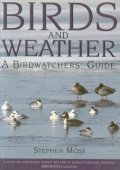
|
|
Birds and Climate ChangeJohn F. Burton
Christopher Helm
1995
"Climatic change has a profound effect on the distribution of animals and plants. for instance, between 1850 and 1950, a period of climatic amelioration, Britain gained several new species from southern and eastern Europe, including Collared Dove, Celti's Warbler, Savi's Warbler, Firecrest and Golden Oriole. The situation has been further complicated by the "greenhouse effect", with northern and southern species "invading" Britain. This study traces and explains the changes in bird distribution in the Northern Hemisphere, with special reference to Britain and Europe, relating them not only to climatic change, but also to other environmental factors."
|
Buy from amazon.co.uk 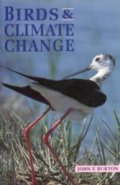
|
|
An Analysis Of The Occurrence Of Rare Birds In Britain In Relation To WeatherA, Austin, N.A. Clark, J.J.D. Greenwood, M.M. Rehfisch
Research report 99
British Trust for Ornithology
1993
46 page report.
|

|
|
Weather and Bird BehaviourNorman Elkins
Illustrations: Crispin Fisher
Poyser
2nd edition
1988
|
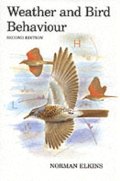
|
|
Weather and Bird BehaviourNorman Elkins
Illustrations: Crispin Fisher
Poyser
1983
|
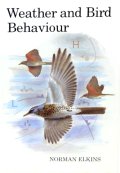
|
|